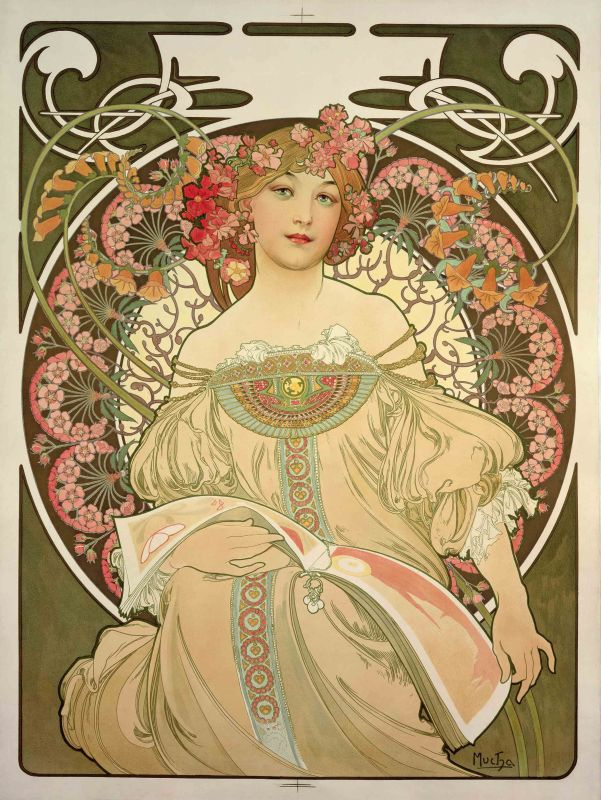log in
Enter site
Login to use Arthive functionality to the maximum
Color lithograph
606 artworks, 29 artists
Colour lithography, or chromolithography (anc. gr. χρῶμα — “colour”, λίθος — “stone”, γράφω — “write”) is a flat printing technique to create a colour image using the required number of plates, a separate plate for each colour, or one-time colouring of the printed base. In the first case, the artist processes each lithographic stone in the desired area with one colour and applies the fragments of the picture to the paper, one by one; in the second case, he draws a multicoloured image on the plate with a swab or brush and prints in “one step”. Chromolithography does not limit the artist and allows him to paint on stone like on canvas or paper, to convey shades and light effects.
The French artist Godefroy Engelmann became the holder of the patent for the colour lithography technique in 1837. The method spread at lightning speed. The second half of the 19th century was a time of rapid development and popularity of coloured lithographic images: reproductions of paintings, literary illustrations, posters, labels and advertising materials, bright biological and botanical reference books. With the development of photography and digital technology at the end of the 20th century, lithographic printing proved to be a laborious and rarely used method, therefore the works increased in price and became collectible.
Jean Granville’s works were included in the golden fund of book illustration. The French miniaturist mastered lithography and became famous for his caricatures and political cartoons. The author created the Animated Flowers series in 1846, a year before his death at the age of 44. Flower people, animal people, objects people... Graceful colour images resemble vivid and frightening dreams and anticipate the era of Surrealism. Impressionist painters gladly used the technique in their work: Beatrice, Child’s Head with Flowers 1897 by Odilon Redon, Child with a Biscuit 1899 by Pierre Auguste Renoir. Alphonse Mucha and Henri de Toulouse-Lautrec became the “super stars” of colour lithography. The Czech modernist and romantic idealist, Mucha is the author of posters of fabulous beauty, exquisite menus for the best Parisian restaurants: Lady of the Camellias 1896, Bagnolet Soap Advertisement 1897, Hamlet, Prince of Denmark 1899, Lottery of National Unity 1912. A lover of Japanese prints, absinthe and Parisian brothels, Henri de Toulouse-Lautrec created advertising posters for inexpensive entertainment establishments, such as Moulin Rouge 1891, Elsa Called The Viennese 1897, Jane Avril, Guitana 1899. Thanks to the maître’s ability, artists woke up famous after putting up posters. German natural scientist Ernst Haeckel bought a microscope and created the famous series of lithographs, Art Forms in Nature 1904: colourful, eerie and mesmerizing fantasy creations have inspired artists, sculptors and architects for a century.
Famous colour lithographic artworks:
Metamorphoses of the Day series 1829, Animated Flowers series 1846 by Jean Granville; Divan Japonais, Ambassadors: Aristide Bruant in His Cabaret 1893, Jane Avril 1899 by Henri de Toulouse-Lautrec; Zodiac 1896, Dreams 1897, Precious Stones series 1900 by Alphonse Mucha.
Famous artists:
Eugene Delacroix, Jean Ignace Isidore Gérard Granville, Ernst Heinrich Haeckel, Alphonse Mucha, Henri de Toulouse-Lautrec, Ramon Casas Carbo, Marc Chagall, Mikhail Larionov, Andy Warhol, Keith Haring.
The French artist Godefroy Engelmann became the holder of the patent for the colour lithography technique in 1837. The method spread at lightning speed. The second half of the 19th century was a time of rapid development and popularity of coloured lithographic images: reproductions of paintings, literary illustrations, posters, labels and advertising materials, bright biological and botanical reference books. With the development of photography and digital technology at the end of the 20th century, lithographic printing proved to be a laborious and rarely used method, therefore the works increased in price and became collectible.
Jean Granville’s works were included in the golden fund of book illustration. The French miniaturist mastered lithography and became famous for his caricatures and political cartoons. The author created the Animated Flowers series in 1846, a year before his death at the age of 44. Flower people, animal people, objects people... Graceful colour images resemble vivid and frightening dreams and anticipate the era of Surrealism. Impressionist painters gladly used the technique in their work: Beatrice, Child’s Head with Flowers 1897 by Odilon Redon, Child with a Biscuit 1899 by Pierre Auguste Renoir. Alphonse Mucha and Henri de Toulouse-Lautrec became the “super stars” of colour lithography. The Czech modernist and romantic idealist, Mucha is the author of posters of fabulous beauty, exquisite menus for the best Parisian restaurants: Lady of the Camellias 1896, Bagnolet Soap Advertisement 1897, Hamlet, Prince of Denmark 1899, Lottery of National Unity 1912. A lover of Japanese prints, absinthe and Parisian brothels, Henri de Toulouse-Lautrec created advertising posters for inexpensive entertainment establishments, such as Moulin Rouge 1891, Elsa Called The Viennese 1897, Jane Avril, Guitana 1899. Thanks to the maître’s ability, artists woke up famous after putting up posters. German natural scientist Ernst Haeckel bought a microscope and created the famous series of lithographs, Art Forms in Nature 1904: colourful, eerie and mesmerizing fantasy creations have inspired artists, sculptors and architects for a century.
Famous colour lithographic artworks:
Metamorphoses of the Day series 1829, Animated Flowers series 1846 by Jean Granville; Divan Japonais, Ambassadors: Aristide Bruant in His Cabaret 1893, Jane Avril 1899 by Henri de Toulouse-Lautrec; Zodiac 1896, Dreams 1897, Precious Stones series 1900 by Alphonse Mucha.
Famous artists:
Eugene Delacroix, Jean Ignace Isidore Gérard Granville, Ernst Heinrich Haeckel, Alphonse Mucha, Henri de Toulouse-Lautrec, Ramon Casas Carbo, Marc Chagall, Mikhail Larionov, Andy Warhol, Keith Haring.
Related styles
-
Graphics31,774 artworks, 4,107 artists
-
Genre scene38,840 artworks, 4,560 artists
-
Art Nouveau8,643 artworks, 1,347 artists
-
Lithography4,601 artworks, 884 artists
Feed

